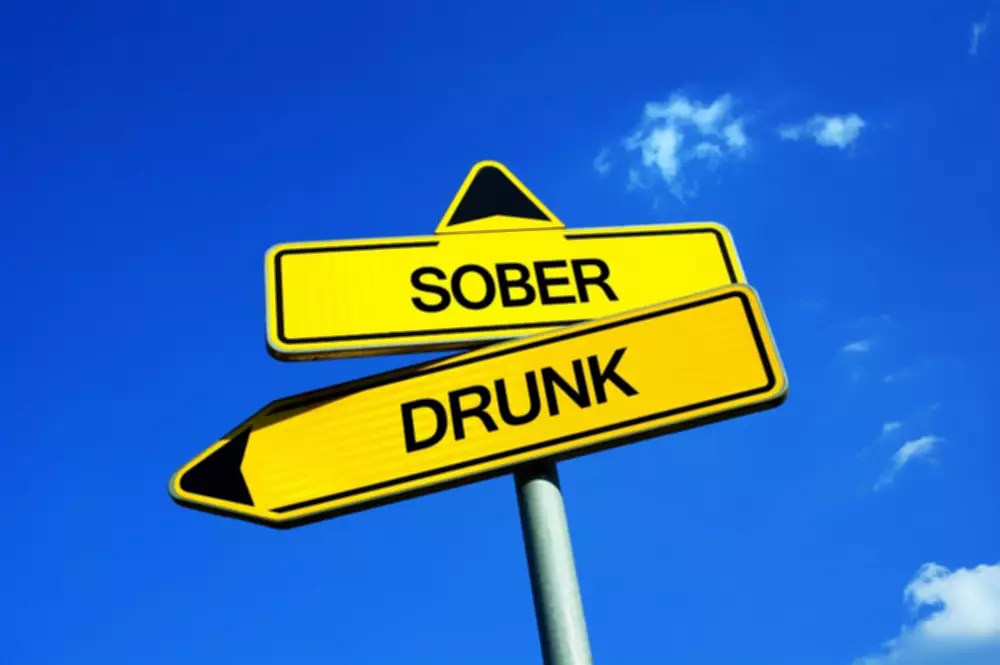Six Stages Of Alcohol Intoxication BMS
Six Stages Of Alcohol Intoxication BMS

Symptoms may also include auditory illusions and hallucinations that frequently are accusatory and threatening; patients are usually apprehensive and may be terrified by the hallucinations and by vivid, frightening dreams. Emesis is common with moderate to in which stage of intoxication does an individual become aggressive or withdrawn and sleepy severe intoxication; because emesis usually occurs with obtundation, aspiration is a significant risk. About 5 to 10% of ingested alcohol is excreted unchanged in urine, sweat, and expired air; the remainder is metabolized, mainly by the liver, where alcohol dehydrogenase converts ethanol to acetaldehyde. Acetaldehyde is ultimately oxidized to CO2 and water at a rate of 5 to 10 mL/hour (of absolute alcohol); each milliliter yields about 7 kcal. Alcohol dehydrogenase in the gastric mucosa accounts for some metabolism; women have lower gastric alcohol dehydrogenase activity than men. In addition to their professional qualifications, every single person here genuinely cares about your progress.
What are the Different Stages of Alcohol Intoxication?

On the other hand, spacing out alcohol consumption allows the body to process and eliminate alcohol gradually, resulting in a lower BAC and a milder level of intoxication. Please note that the effects of alcohol can vary depending on various factors such as body weight, tolerance, and the rate of alcohol consumption. Understanding the five stages of intoxication is crucial for promoting safe drinking practices and recognizing when an individual may be at risk due to alcohol consumption. It’s essential for drinkers to be aware of their limits and for those around them to recognize the signs of intoxication to prevent accidents and ensure safety. Responsible drinking involves not only knowing one’s limits but also planning ahead, such as designating a sober driver or arranging for safe transportation.
Get Accredited Treatment Programs at Purpose
In acute alcohol intoxication, laboratory tests are generally not helpful; diagnosis is usually made clinically. Exceptions include fingerstick glucose to rule out hypoglycemia and sometimes tests to determine BAC. Confirmation by breath or blood alcohol levels is useful for legal purposes (eg, to document intoxication in drivers or employees who appear impaired).
Alcohol Interventions for Young Adults National Institute on Alcohol Abuse and Alcoholism NIAAA
- It is extremely important that staff responsible for patient assessment be adequately trained in the utilization of the CIWA-Ar.
- Our compassionate, friendly staff is available 24-hours a day to take your call and help you begin your recovery journey.
- When someone has had quite a few drinks, the symptoms of the excitement stage become intensified.
- Blood alcohol content, or blood alcohol concentration, (BAC) measures the amount of alcohol in your blood.
- Supportive care and reassurance from health care personnel are important elements of comfortable detoxification and help to facilitate continuing treatment.
Chlordiazepoxide 50 to 100 mg orally every 4 to 6 hours, then tapered, is an older acceptable alternative for less severe cases of withdrawal. Young children who drink alcohol are at significant risk of hypoglycemia because alcohol impairs gluconeogenesis and their smaller stores of glycogen are rapidly depleted. Women may be more sensitive than men, even on a per-weight basis, because their gastric (first-pass) metabolism of alcohol is less due to lower activity of alcohol dehydrogenase in the gastric mucosa. Drinking during pregnancy may result in fetal alcohol spectrum disorder.
- Coma or unconsciousness is possible when a person’s BAC is between 0.35% and 0.45%.
- Alcohol servers and what is Oxford House bartenders must remember that this is the legal limit for intoxication.
- Alcohol accumulates in blood because absorption is more rapid than oxidation and elimination.
- By recognizing the potential long-term health consequences of intoxication, individuals can take steps to protect their health and well-being, and reduce their risk of adverse outcomes.
- However, in-classroom use of restraints was not found helpful, as it actually increased problem behaviors (Magee and Ellis, 2001).
- The responsible clinician (physician, nurse practitioner, physicians’ assistant) should be thoroughly familiar with the instrument and be able to train nurses and other health professionals who will be monitoring the patients.
Partial Hospitalization Programs (PHPs)

Of course, the severity of a person’s symptoms will depend on how much they have had to drink. Kelly brings empathy to an underserved population and her clients share that they feel listened to without judgement. When a person has consumed quite a few alcoholic drinks, the effects of the alcoholic stupor stage will become stronger.
The Right Treatment Facility
Individuals may exhibit slurred speech, staggering gait, and impaired coordination. Emotional responses can become exaggerated, leading to mood swings, and reaction times are significantly slowed. At this stage, the risk of alcohol-related accidents and poor judgment increases substantially.
What Influences BAC Levels?
Services include medical care, behavioral therapy, and support groups, along with other customized therapies. After this, if the person still needs care, they will require a different type of program such as a longer term residential program. Scaling these risky BAC thresholds is not as difficult as some might think. Because it takes time for alcohol to have an effect on the body, consuming the large amounts required to reach these BAC levels can occur while the person is still reasonably sober. Goldstein and Goldstein (29) proposed in 1961 that dependency develops as a cell or organism makes homeostatic adjustments to compensate for the primary effect of a drug.

ED visits involving nonmedical use of pharmaceuticals increased 98.4% over the same period, from 627,291 visits to 1,244,679 (1). If your loved one is still conscious, see if you can get him to lie down on his side or drink a little water. If your friend has lost consciousness, it’s necessary to get her onto her side to prevent her from potentially choking on vomit, which can lead to death. Ensuring the individual’s immediate safety is essential, but supportive care as they gradually recover from intoxication is also important.
What are the six critical signs of alcohol poisoning?
When you drink alcohol, the drug enters your bloodstream and makes you feel intoxicated. If doctors, police officers, or other professionals need to determine how intoxicated you are, they will measure your blood alcohol concentration (BAC). If you believe someone is significantly intoxicated, the first thing to do is to remove any additional alcohol from their immediate surroundings so they can’t continue to drink. Support groups such as Alcoholics Anonymous (AA) and Self-Management And Recovery Training (SMART) are open to anyone with a substance use disorder. Some services provide food and transportation, but services vary by program.

Responsible Alcohol Consumption
Addiction used to carry a negative stigma; however, it is now recognized as a legitimate disease that needs treatment, just like other conditions. Those can include oxygen therapy, a breathing tube Substance abuse that keeps airways clear, or IV fluids for dehydration. If alcohol intoxication has progressed to a critical level, activated charcoal may help stop the devastating effects of alcohol from moving further along or the stomach may need to be pumped to clear its contents. The number of referrals due to complications from acute intoxication or withdrawal from substances to emergency departments (EDs) are at all-time highs.






